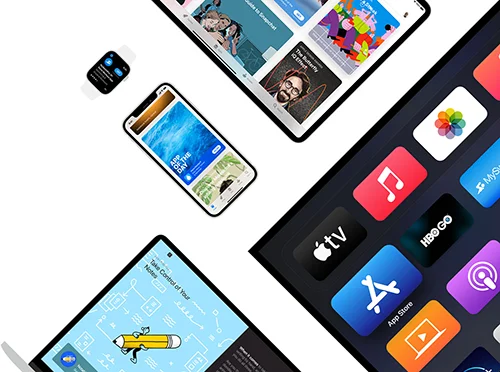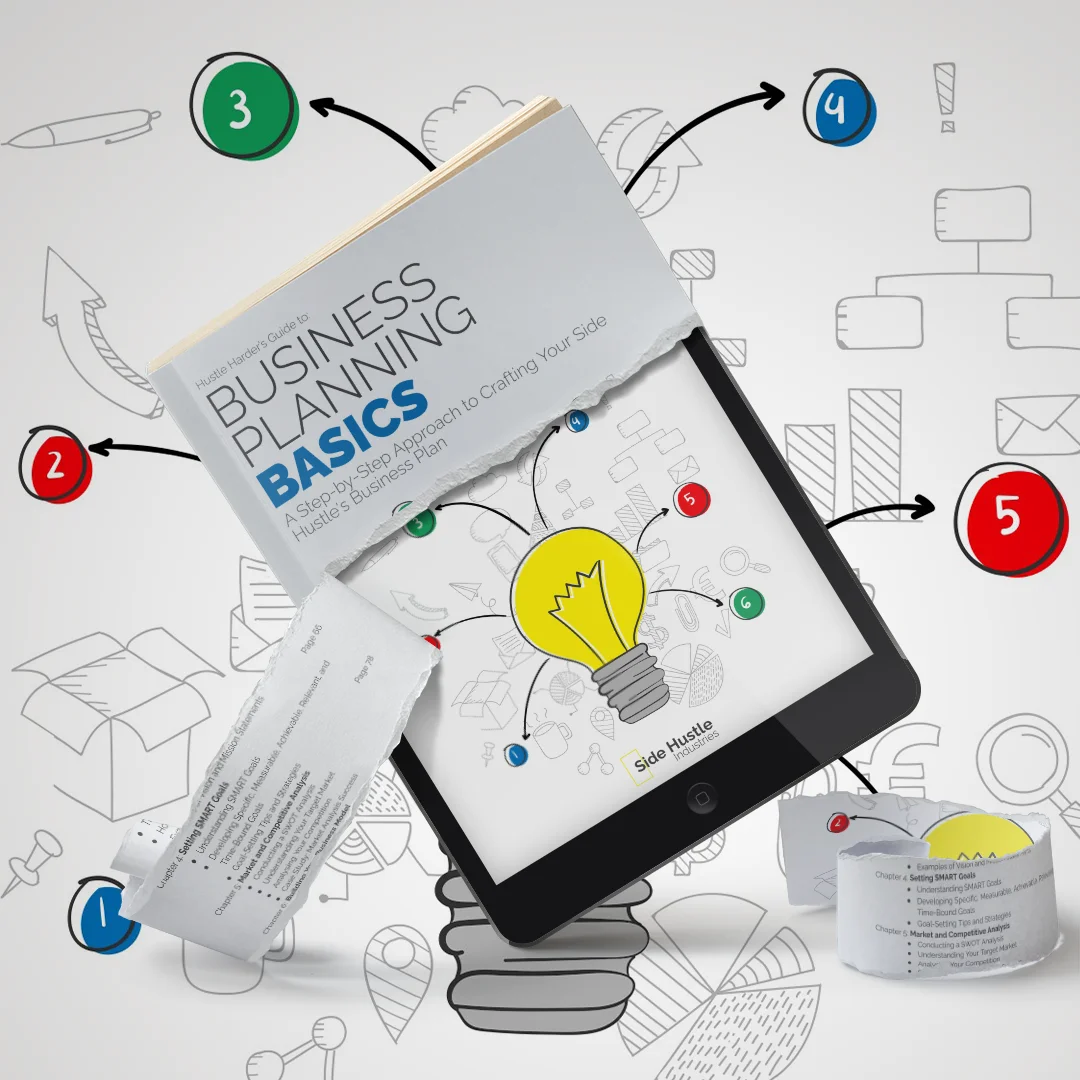
Exploring real-life business model examples can provide valuable insights and inspiration for your side hustle or startup. In this article, we’ll delve into a variety of business models used by successful companies across different industries. These examples demonstrate the diversity of approaches and the adaptability of business models in the ever-evolving world of entrepreneurship.
1. Amazon
Business Model: E-commerce
Key Elements:
- Massive online marketplace offering a wide range of products.
- Subscription services such as Amazon Prime.
- Third-party seller platform with fees for sales.
- Cloud computing services through Amazon Web Services (AWS).
Why It Works: Amazon‘s e-commerce business model leverages a vast online marketplace and diverse revenue streams. It generates income through product sales, subscription fees, and cloud services. The third-party seller platform allows other businesses to use Amazon’s infrastructure, creating a win-win ecosystem.
2. Spotify
Business Model: Subscription
Key Elements:
- Music streaming platform.
- Free ad-supported tier.
- Premium subscription for ad-free and additional features.
- Family and student subscription plans.
Why It Works: Spotify‘s subscription model capitalises on consumers’ desire for on-demand music and convenience. Offering both free and premium tiers caters to a wide range of customers. The recurring subscription fees create a reliable revenue stream.
3. Google
Business Model: Advertising Revenue
Key Elements:
- Search engine and online advertising platform.
- Display and video advertising.
- AdWords and AdSense for advertisers and publishers.
Why It Works: Google‘s primary revenue stream comes from advertising. Advertisers pay for prominent placement in search results and on websites within the Google Display Network. The precision of Google’s advertising targeting makes it a top choice for businesses seeking online exposure.
4. Netflix
Business Model: Subscription
Key Elements:
- Streaming platform for movies and TV shows.
- Monthly subscription pricing.
- Customised content creation and licensing.
Why It Works: Netflix‘s subscription model is built on the appeal of binge-worthy content. It continually invests in creating and licensing exclusive shows and movies. The simplicity of the monthly subscription fee, coupled with a wide content library, fosters customer loyalty.

5. Apple
Business Model: Licensing and Hardware Sales
Key Elements:
- Hardware products such as iPhones, MacBooks, and iPads.
- Proprietary software, iOS, macOS, etc.
- App Store, iTunes, and licensing fees for developers.
Why It Works: Apple‘s business model thrives on a combination of hardware sales, software licensing, and app ecosystem revenue. It has created a seamless and integrated user experience across its products, encouraging brand loyalty.
6. Airbnb
Business Model: Marketplace
Key Elements:
- Online platform for property rentals.
- Hosts list their spaces for short-term rentals.
- Guests book accommodations and pay fees to Airbnb.
Why It Works: Airbnb‘s marketplace model connects travellers with hosts, creating a platform where individuals can monetize their property while providing unique accommodations. The business benefits from both hosts and guests, earning a commission for facilitating the transaction.
7. Tesla
Business Model: Manufacturing and Subscription
Key Elements:
- Electric vehicle manufacturing.
- Sale of electric vehicles.
- Subscription services for autonomous driving features.
Why It Works: Tesla combines manufacturing and a unique subscription model. It sells electric vehicles and offers subscriptions for advanced autonomous driving features. This combination appeals to both EV enthusiasts and those looking for cutting-edge technology.
8. Patreon
Business Model: Crowdfunding and Subscription
Key Elements:
- Online platform connecting creators with fans.
- Creators offer content or rewards to supporters.
- Supporters pay creators directly through pledges.
Why It Works: Patreon operates on a unique model that combines crowdfunding and subscriptions. Creators earn income by offering exclusive content to their supporters. This model allows artists, writers, and other creators to monetize their work and connect directly with their fanbase.
9. Uber
Business Model: On-Demand and Marketplace
Key Elements:
- Ride-sharing and food delivery platform.
- Independent contractors (drivers) offer services.
- Customers request rides or food delivery via the app.
Why It Works: Uber‘s model combines the on-demand nature of services with a marketplace for independent drivers. It capitalises on the sharing economy trend, providing transportation and food delivery services with a level of convenience previously unavailable.
10. Pandora
Business Model: Advertising and Freemium
Key Elements:
- Music streaming platform.
- Free, ad-supported version with ads.
- Pandora Plus and Pandora Premium for ad-free listening.
Why It Works: Pandora utilises a combination of advertising and freemium models. It offers free streaming with ads and premium subscription tiers. This approach caters to different customer segments, generating revenue from both advertising and subscriptions.
11. Square
Business Model: Payment Processing and Financial Services
Key Elements:
- Point-of-sale hardware and software.
- Payment processing for businesses.
- Financial services, including lending and business solutions.
Why It Works: Square provides a suite of financial services for businesses, including payment processing, lending, and point-of-sale solutions. It caters to small and medium-sized businesses, empowering them with tools to manage their finances and operations.
12. Slack
Business Model: Freemium
Key Elements:
- Team collaboration and messaging platform.
- Free tier with limitations.
- Paid subscriptions with enhanced features and support.
Why It Works: Slack‘s freemium model allows teams to use its collaboration platform for free, while businesses that require advanced features and support subscribe to premium plans. It caters to a wide user base while monetizing larger organisations.

13. Nespresso
Business Model: Razor and Blade
Key Elements:
- Sale of Nespresso Machine (razor).
- Ongoing sales of Nespresso’s Coffee Pods (blade).
Why It Works: Nespresso employs a classic razor and blade model. It sells the initial product, Coffee Machines, and ensures ongoing revenue through repeat purchases of Coffee Pods. This approach creates long-term customer relationships and revenue.
14. Nike
Business Model: Direct-to-Consumer
Key Elements:
Manufacture and sale of athletic footwear and apparel.
Nike-owned retail stores and online platform.
Direct engagement with customers.
Why It Works: Nike has increasingly shifted to a direct-to-consumer model, bypassing traditional retail channels. It focuses on engaging with customers through its own stores and online platform, building brand loyalty and enhancing control over its product offerings.
15. GitHub
Business Model: Freemium
Key Elements:
- Code hosting and collaboration platform.
- Free access to open-source projects.
- Paid subscriptions for private repositories and advanced features.
Why It Works: GitHub‘s freemium model appeals to open-source developers and businesses alike. It allows open-source projects to use the platform for free while charging businesses for private repositories and additional features.
16. Nestlé
Business Model: Licensing and Brand Extension
Key Elements:
- Manufacture and sale of food and beverage products.
- Licensing its brands for various consumer products.
- Extending its brands into new categories.
Why It Works: Nestlé leverages its strong brand presence by licensing its brands for use in various consumer products and extending its brands into new categories. This approach allows the company to maintain brand equity and generate additional revenue.
17. LinkedIn
Business Model: Subscription and Advertising Revenue
Key Elements:
- Professional networking platform.
- Free basic usage with premium subscription tiers.
- Advertising and sponsored content.
Why It Works: LinkedIn‘s business model combines revenue from premium subscriptions with advertising. Premium subscriptions offer enhanced features to professionals, while advertisers reach a valuable audience of professionals seeking job opportunities and industry insights.
18. Walmart
Business Model: Brick-and-Mortar and E-commerce
Key Elements:
- Physical retail stores.
- E-commerce platform.
- Wide product range, including groceries, electronics, and clothing.
Why It Works: Walmarthttps://www.walmart.com/ operates both physical stores and an e-commerce platform, creating a multi-channel retail model. This approach serves customers who prefer in-store shopping and those who favour online convenience.
These real-life business model examples showcase the diversity and adaptability of entrepreneurial strategies. Businesses succeed by aligning their business models with customer needs, market dynamics, and their unique value propositions. When considering your own side hustle or startup, draw inspiration from these examples while tailoring your approach to meet your specific goals and circumstances. Your business model is your canvas, and your creativity and ingenuity will determine your success.

*Also available on Amazon in Kindle, Soft Cover & Hard Cover formats. —> Click Here.
